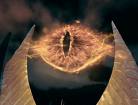 That clown post we were talking about? It’s going very slowly. To tide you over (and let’s face it, tiding you over is right at the heart of our business!) we have a few quick scatter hits.
That clown post we were talking about? It’s going very slowly. To tide you over (and let’s face it, tiding you over is right at the heart of our business!) we have a few quick scatter hits.
1. Penguin reports (via Publishers Weekly) that its eBook sales the first four months of the year already equal its sales all last year. I honestly don’t understand this, primarily because you don’t seem to get a price break from Penguin on eBooks versus paperbacks and the number of available books is pretty small. And I know very few people who have Microsoft readers (or Kindles, for that matter, though I did see a fellow reading his Kindle in the park the other day, and he looked very contented). Shouldn’t the price be MUCH lower?
2. If you haven’t already, please take a look at Randy Gragg’s response to my earlier post on PNCA’s Idea Studio panel led by Metropolis editor-in-chief Susan Szenasy. I was hoping for more commentary about the notions expressed by the panel and to Randy’s rebuke of my contention that neither Tom McCall nor Neil Goldschmidt thought in the same full-throttled way about sustainability issues that our environmentalists do today. I wasn’t even nasty in my response: I am SO restrained. If i had been, the word “deification” might have slipped out. Oops. Anyway, these are important issues, and your thoughts would be appreciated.
3. I have absolutely nothing on my mind concerning the $7,290,000 that a Rufino Tamayo painting, Trovador, fetched at auction yesterday, part of Christie’s Latin American sale. I just liked the painting, above. I know there are worlds of painting about which I know nothing. For example, i have no idea who the best painters in Atlanta have been historically or even now, though a little research might generate some names (though not actual experiences). I know a few names of Latin American artists, the big ones, the Mexican muralists, Frida Kahlo (the Tamayo broke Kahlo’s auction price record), those working within the Western art tradition, at least to some extent, and embraced by the apparatus of that tradition, including its auction houses. Tamayo, for example, was a Zapotecan Indian who studied modern art at Escuela Nacional de Bellas Artes in Mexico City, and then created his own style from the collision. But enough, enjoy Trovador.








